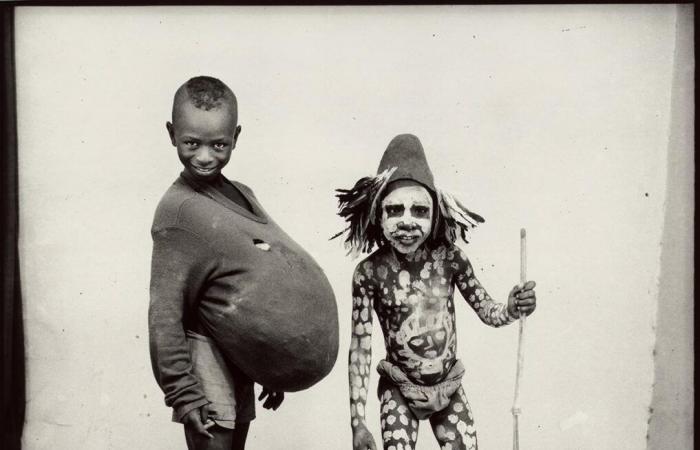Jack Mainman Gallery present “Look at me”an exhibition of photographs by the Malian photographer Malick Sidibé. This exhibition pays tribute to Sidibé’s unequaled capacity to capture the heart of Bamako, Mali, after the release of the Pays du Joug Colonial in 1960.
Presenting a vibrant selection of photographs, some of which are unpublished, this presentation invites the public to immerse themselves in animated festivals, joyful rallies and moments of tenderness that have marked the transformative era of a young nation wishing to establish its own national identity. In the current cultural context, where visibility and representation are of capital importance, the work and the inheritance of Sidibé remain more important than ever.
On the occasion of this exhibition, the publication of Painted Frames, a monograph of Loose Joints, is the first exploration of Sidibé synergetic photographs taken with painted frames. For these works, Sidibé collaborated with local Malian artists in order to associate his emblematic photograph with traditional West African art of glass painting. Look at me presents a selection of these painted frames, thus reaffirming the sacred character of African photography as a vector of memory and identity. The publication also includes an essay by the writer, independent researcher and collector-archivist Amy Sall, in which she defends the continuous and growing importance of Sidibé’s work:
“Malick Sidibé was the witness and the protector of an emerging and flourishing postcolonial society, where a new modernity was built by transcultural osmosis. From his studio to the evenings, and even on the banks of the Niger river, Sidibé and his camera were at the heart of everything. He was not content to chronic the Malian history and culture, he brought an essential contribution to it … Night boxes, the salons and the interior courtyards he photographed were spaces of freedom and community. permeate all of Sidibé’s archives. ”
Look at me underlines the role of Sidibé as a pioneer, shaping the visual identity of the African diaspora, offering a window on a Malian nation which dared to join a world movement of youth. His photographs transcend their historical context, part of contemporary debates on identity, the ability to act and the power to be seen. Sidibé’s photographs are not content to freeze time, they transform these scenes into vibrant scenes where his subjects – young couples impatient to marry, older men or women claiming their freedom of expression – affirm their presence and their identity. In Dance the twist (1963-2010), Sidibé captures a young man and a woman joyfully dancing the twist, an American rock’n’roll dance which became a global cultural phenomenon from 1959 to the early 1960s, known for its simple but lively steps which encouraged freedom of movement and expression. By offering its subjects to be seen and celebrated, Sidibé’s objective offers a powerful counterpoint to our world filtered by technology, reminding the spectator the raw and spontaneous joy of human relations. Views from the back, one of Sidibé’s most famous series – of which copies are kept in the collections of many museums such as the Getty Museum, the National Gallery of Art and the Metropolitan Museum of Art – allows the spectator to better understand the curatorial look of the photographer, representing women in his studio, bare back against the objective, on a background of emblematic striped walls.
Sidibé’s photographs serve both as a reflector and spokesperson, magnifying the vibrant and intimate essence of the people of Bamako the day after their independence from the French colonial yoke. His works capture a liberated people who resonate more than ever with contemporary emergency.
Malick Sidibé: Look at me
17 Avril – May 31, 2025
Jack Mainman Gallery
513 West 20th Street
New York, NY 10011
www.jackshainman.com








